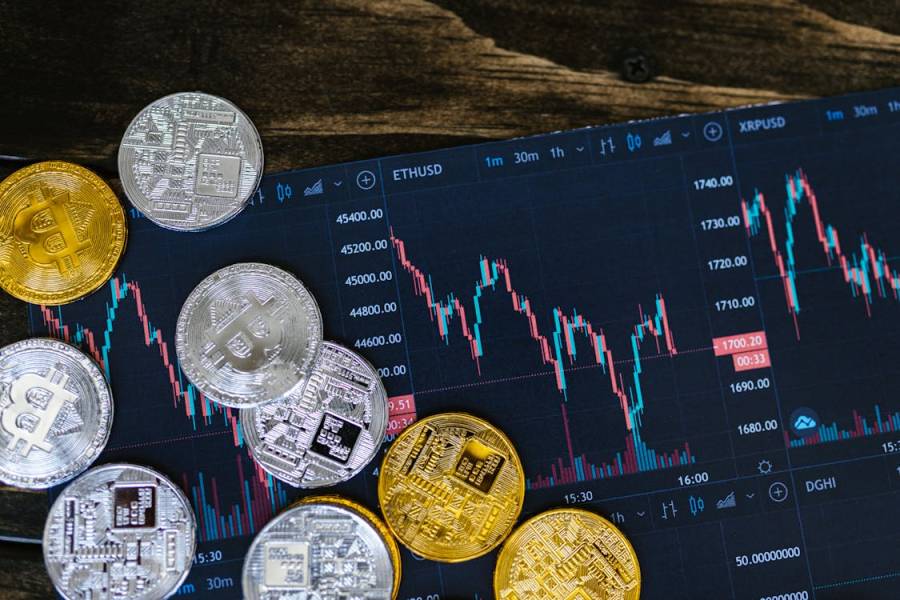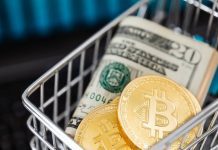Real-world asset (RWA) tokenization is revolutionizing financial markets by blending traditional assets with blockchain technology. RWAs unlock liquidity in previously illiquid sectors by converting tangible and intangible assets into digital tokens.
This technology has the power to disrupt financial industries, offering new opportunities for businesses and investors. Tokenization allows access to previously inaccessible markets and reduces inefficiencies that traditional finance encounters.
As blockchain continues to evolve, RWAs represent a significant shift in how assets are traded and managed in decentralized finance (DeFi). Here’s a closer look at how RWAs are changing the financial landscape.

What Are Real-World Asset Tokens?
Real-world asset tokens are digital representations of traditional financial assets, such as real estate or bonds. These assets are brought onto a blockchain, enabling transactions in decentralized markets. It’s easier to trade and transfer ownership without intermediaries by tokenizing assets.
McKinsey & Company projects that tokenized market capitalization could hit $2 trillion by 2030 across various asset classes. Their estimates show a potential range from $1 trillion to a high of $4 trillion. Excluding stablecoins and CBDCs prevents double counting, focusing solely on tokenized real-world assets.
According to Polymesh, this is because tokenization provides new methods to manage tangible and intangible assets securely. Real-world assets range from art to commodities, providing a broad variety of investment opportunities. Blockchain technology ensures these tokens offer both transparency and efficiency in transactions.
How does tokenization reduce inefficiencies in traditional finance?
Tokenization reduces inefficiencies by eliminating intermediaries, speeding up transactions, and lowering costs associated with asset transfers. Traditional finance often involves multiple steps, including manual processes, which can lead to delays and increased costs. Blockchain simplifies these procedures, offering a more direct and transparent approach.
The Role of Blockchain in RWA Tokenization
Blockchain plays a crucial role in the tokenization of RWAs, offering a secure and efficient method for managing assets. Its decentralized nature ensures fairness and transparency, making it an ideal technology for asset management and transactions.
Blockchain’s role in RWA tokenization offers several key benefits that enhance transparency, security, and efficiency:
- Transparency and Trust: Blockchain ensures transparency, offering trust to all participants in the system.
- Immutable Ledger: Transactions are recorded on an immutable ledger, ensuring data integrity.
- Smart Contract Automation: Blockchain’s smart contracts automate processes, reducing human error and transaction costs.
Coinspeaker notes that regulated marketplace INX Digital Company recently announced plans to list Furahaa Group (FURA) tokens on its platform. This initiative aligns with INX’s strategy to connect mission-driven businesses with global investors through tokenized assets. Furahaa Group, known for its leadership in plant-based fast food and vegan products, will offer investors access through its FURA tokens.
This move showcases blockchain’s role in unlocking accessible investments in high-growth, mission-driven industries.
Can blockchain help in managing the legal aspects of RWAs?
Yes, blockchain can assist in managing legal aspects by recording ownership rights and contractual obligations on an immutable ledger. This ensures that asset transfers are transparent and legally binding, reducing the chances of disputes. Blockchain-based systems can also automate compliance with legal requirements through smart contracts.
Advantages of RWA Tokenization in DeFi
Decentralized finance (DeFi) stands to benefit greatly from real-world asset tokenization. The tokenization of RWAs brings several advantages to the DeFi ecosystem, including:
- Valuable Collateral and Investment Opportunities: RWAs provide valuable collateral and investment opportunities in DeFi markets.
- Increased Liquidity: Tokenized assets can be traded across platforms, offering liquidity to illiquid markets.
- Inclusive Access: DeFi enables fractional ownership, allowing smaller investors to participate in valuable assets.
- Lower Costs and Wider Reach: DeFi can reach a broader audience with lower costs by leveraging blockchain technology.
- Expanded Financing Access: RWAs open doors for emerging markets to access financing previously out of reach.
BeInCrypto states that the RWA tokenization market has now surpassed $10 billion, fueled by growing institutional interest. Big names are leading the charge, bringing traditional finance into DeFi. This highlights the intersection of traditional finance and DeFi as institutions adopt blockchain technology.
How does DeFi expand access to financing for emerging markets?
DeFi expands access to financing for emerging markets by offering decentralized, tokenized asset trading without traditional financial barriers. It enables businesses and individuals from these markets to access capital, bypassing institutional roadblocks. This creates new investment opportunities, particularly in areas where access to conventional banking infrastructure is restricted.
The Future of Real-World Asset Tokenization
With significant growth expected in the upcoming years, RWA tokenization has a bright future. As blockchain technology evolves, tokenization will expand into more asset classes, creating new opportunities.
Financial institutions and regulators are beginning to adopt blockchain solutions, improving market confidence in RWAs. As more industries adopt tokenization, the financial landscape will continue to shift towards decentralization. With increasing interest in DeFi, RWAs will likely become a dominant asset class.
As per CryptoGlobe, experts predict the future of RWA could see up to $30 trillion in tokenized assets. However, some analysts believe that such projections may be overly optimistic, given current trends. With an annualized growth rate of 121%, a more realistic estimate puts tokenized assets at $1.3 trillion by 2030.
Innovations in compliance and security will further encourage adoption across global markets. The future of finance lies in real-world asset tokenization, driving global market transformation.
What role will regulators play in RWA tokenization’s future?
Regulators will play a crucial role in ensuring that RWA tokenization adheres to legal and financial standards. As the market grows, clearer regulatory frameworks will help ensure the protection of investors and prevent fraud. Regulatory clarity will enhance trust and confidence in the tokenization process, driving wider adoption.
Real-world asset tokenization is changing the financial environment by integrating traditional assets with blockchain technology. This shift offers many benefits, like increased liquidity and reduced inefficiencies in asset management. It also opens up new opportunities for investors, allowing them access to previously unreachable markets.
Tokenization, on the other hand, requires clear laws and robust security measures to be successful. As blockchain technology evolves, the financial world is adapting to these changes. Tokenizing real-world assets has the potential to reshape the future of finance by offering faster transactions, lower costs, and greater transparency. The future of finance looks bright, with RWA tokenization leading the way.
HedgeThink.com is the fund industry’s leading news, research and analysis source for individual and institutional accredited investors and professionals



































